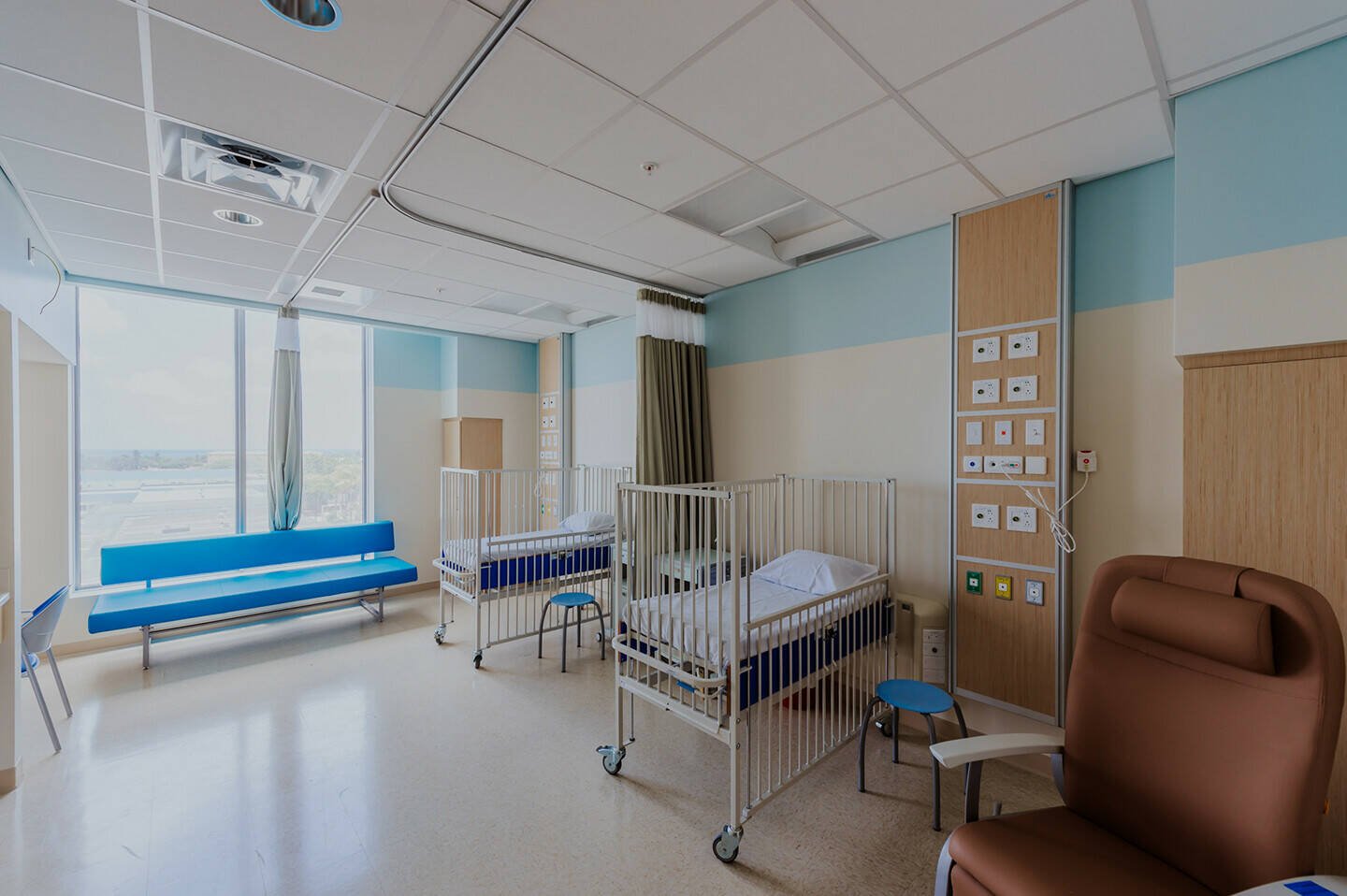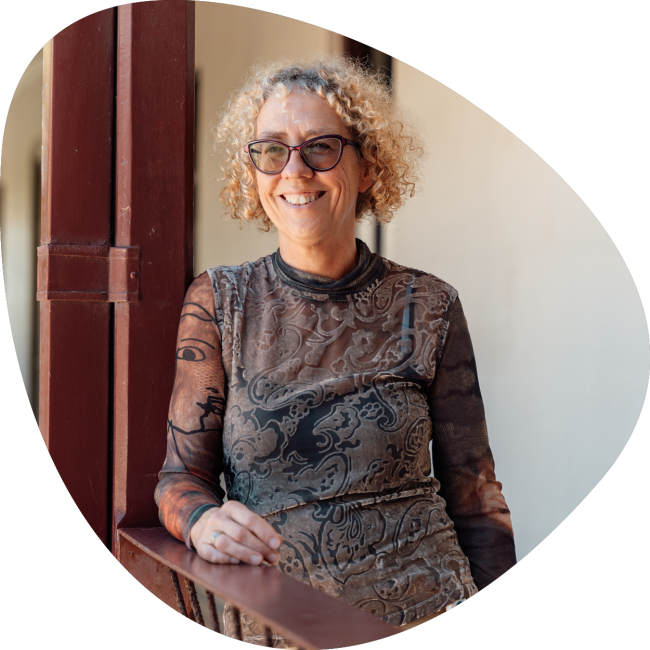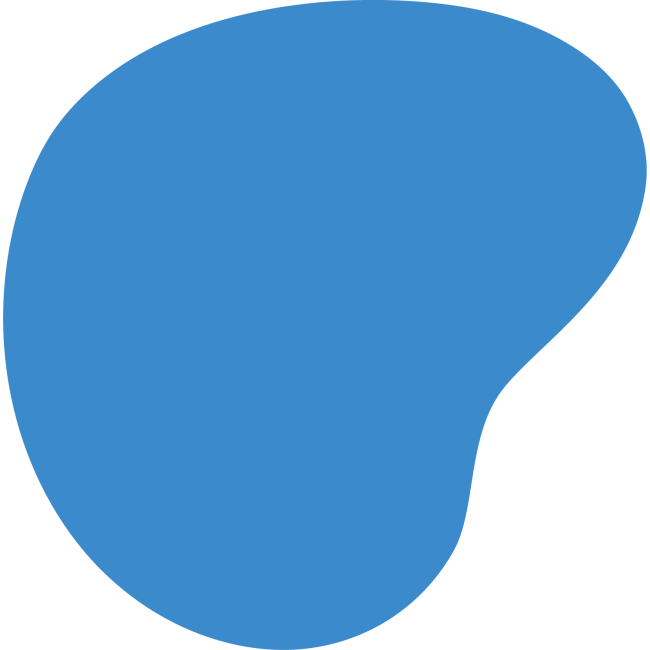English
Next article
Table of contents
Share this page
And while the hospital has its own protocols, the Codigo keeps everyone sharp and helps with sifting out potential victims in other institutions, for instance at the San Nicolas Medical Institution, IMSAN. The latter does not have the same registration protocol as HOH, but the Codigo and unwritten agreements enable the IMSAN triage personnel to send suspicious cases to the hospital ER for further investigation. Linssen: “In the meantime, HOH is continuously taking steps to enhance its role to uncover abuse and the registration systems, including the Codigo, are proving to be excellent tools.”
Corina Linssen thinks the Codigo di Proteccion, developed to help institutions recognise signs of child abuse, enable the supervisors of the Codigo to have a say in the execution of protocols at the hospital. Supervising the implementation of the codes take time, and needs proper execution as well. “Particularly at the level of ER and triage, it is difficult to expect the personnel to hold long conversations with parents and children. But the Codigo allows us to ask for more information on a case. We are in the position to continue asking for updates, even if the child has gone home and the case is officially closed.”
The HOH social worker admits that while neglect is a large component of child abuse, it is also the most difficult to uncover. Conversations with parents thus can bring issues to light, albeit begrudgingly. “But those parents also express exasperation and state that they don’t know what to do.” This is when other agencies are called upon. Still, neglect is difficult to assess when children are taken to HOH. There may be visual signs like dirty hair and clothes, but these do not always translate to neglect. “Nurses sometimes complain parents don’t spend time with their hospitalised children. I remind them, however, that many are single parents who work in the hotel sector, with other children at home.
There may be visual signs like dirty hair and clothes, but these do not always translate to neglect
Codigo di Proteccion
Balance
Kind Check
Bureau Sostenemi
7 min
HOH social worker and member of the Commission Child Protection
Corina Linssen
Background
Continuous focus on refining child abuse signalling
Scroll down
The Horacio Oduber Hospital has set up a system to quickly identify signs of child abuse. In addition, the Codigo allows for more information on a case to be asked for, when needed. “We are in the position to continue asking for updates, even if the child has gone home and the case is officially closed.”
Sometimes we catch a case on the third or fourth visit to the ER. That is when a pattern emerges
The standard registration form is part of protocol at the HOH and was developed over the course of circa twelve years. In the early years, the forms were filled in manually by ER personnel. “I have been here for two years now and we have been able to digitalise the process during this time,” Linssen says. “The system requires the form to be completed, otherwise the electronic patient file cannot be closed.” There is a gap in the information when a child does not go further than triage, as the data collected is not as complete as when an ER doctor attends the patient. “Sometimes we catch a case on the third or fourth visit to the ER. That is when a pattern emerges.”
Adults who are there for drug and/or alcohol intoxication, people with psychiatric problems or people who come in because of domestic abuse are screened for a check on children
It is not likely that the employer will take kindly to the employee taking time off to be with her child in the hospital, and she cannot risk losing her job.” Linssen says she conducts conversations with both the nurses and parents. “Sure, we would prefer for the parent to stay with the child or have someone stay with the little patient. But we also have to look at the entire picture and look for balance.”
Both forms, the Child Registration and the child-check, are linked to the patient’s Electronic Patient Record. Both are automatically linked to the printout that the Codigo supervisor, Ageeth Kock Kasters, gets every week. “She then picks out the cases that need to be discussed in the child protection committee.” So far, the child registration and child-check have not produced a match.
HOH also developed the ‘Kind Check’ (child check) which is aimed at certain adults who visit the ER. Not all adults are screened as part of a check on children; only those who are there for drug and/or alcohol intoxication, people with psychiatric problems or people who come in because of domestic abuse. “The triage or ER staff have to comply with the protocol to ask these adults whether they have children and if they know where their children are at that moment. If there is an indication that the patient has children, but cannot or will not say further where those children are, the staff follows a protocol on how to gain specific information on the children. However, if they have any doubt, they can call the police to help check in on the children and make sure they are safe.”
The ‘Kind Check’ can be challenging. “It is difficult to have a good conversation with an intoxicated person or someone with a psychiatric condition. But it is less problematic to obtain information on children in domestic violence cases.”
Dr. Rafael Croes takes the lead when a child has a medical history and schedules further appointments with the child and parents if the commission deems that necessary. The paediatrician can also schedule calls with the family’s general practitioner for specific questions, to get clarity about the family dynamics. “I also call parents with additional questions if the child’s issue is not medical, but more related to the socio-educational realm. The questions are simply to ask how things are going and how the child and parents are holding up,” Linssen explains. The commission gets the Bureau Sostenemi (the central registration office for child abuse) involved when the available information indicates a potentially unsafe situation for the child. “Together we will then decide on further investigation. We also check if a child is a patient of or is on the waiting-list to be treated at Respaldo. If this is the case, Respaldo staffers get a heads up about potential safety issues.”
Parents, in general, cooperate with answering the questions, as they are part of standard protocol. “Of course, parents are surprised when we call them once they are back at home and ask the reason for calling,” Linssen says. “We normally explain we do so to ensure the well-being of children and, in general, the reactions are positive.” However, the parents’ reaction also determines whether Linssen decides on further investigation. A defensive attitude is a red flag.
The commission includes paediatrician Louise Rafael Croes, Else Timmermans of Aruba Mental Health foundation, Respaldo, as well as Ageeth Kock Kaspers, who is the other Codigo supervisor at the HOH. Kock Kaspers, the Plaster Master, receives the information when a child screens red, and conducts extra checks on the information to determine whether a case should be referred to the commission or not. “Generally, all cases that receive a red code come to the commission,” Linssen says. “We then meet every other week to discuss the case, and establish follow-up steps.” The Emergency Room personnel is trained to make specific decisions during night time shifts, to determine whether they feel that the child may or may not be safe. The child can be hospitalised to ensure a safe space, which allows for further investigation of the home situation. Corina is then joined by paediatrician Rafael Croes for conversations with the parents.
“All children who come to the hospital for any service are screened upon arrival - not just at the Emergency Room,” Linssen says. The screening is in the form of a questionnaire that all triage employees are required to fill in. The questionnaire helps to assess whether an injury or complaint fits the age and/or story of the patient, whether the relation observed between parents/caretaker is normal and adequate, and if there are any other signs that the Codigo di Proteccion needs to be put into use. If one or more of the answers are affirmative, the child’s case is referred to the commission,” Linssen tells.
The best way to protect children from continuous abuse is to recognise the symptoms and stage interventions as soon as possible. This is the purpose of the Child Registration as well as the ‘Kind-check’ (child control) systems the dr. Horacio Oduber Hospital (HOH) works with.
“Both systems are proving their worth,” says HOH social worker and member of the Commission Child Protection, Corina Linssen (56). Linssen is also one of the two supervisors of the Codigo di Proteccion at the HOH. After years managing institutions like the Casa Cuna orphanage and setting up the Tienda di Educacion (Education store) for young mothers, she is now working in the field of social work and policy execution.
Standard screening




Next article
Table of contents
English
Share this page
And while the hospital has its own protocols, the Codigo keeps everyone sharp and helps with sifting out potential victims in other institutions, for instance at the San Nicolas Medical Institution, IMSAN. The latter does not have the same registration protocol as HOH, but the Codigo and unwritten agreements enable the IMSAN triage personnel to send suspicious cases to the hospital ER for further investigation. Linssen: “In the meantime, HOH is continuously taking steps to enhance its role to uncover abuse and the registration systems, including the Codigo, are proving to be excellent tools.”
Corina Linssen thinks the Codigo di Proteccion, developed to help institutions recognise signs of child abuse, enable the supervisors of the Codigo to have a say in the execution of protocols at the hospital. Supervising the implementation of the codes take time, and needs proper execution as well. “Particularly at the level of ER and triage, it is difficult to expect the personnel to hold long conversations with parents and children. But the Codigo allows us to ask for more information on a case. We are in the position to continue asking for updates, even if the child has gone home and the case is officially closed.”
There may be visual signs like dirty hair and clothes, but these do not always translate to neglect
Codigo di Proteccion
It is not likely that the employer will take kindly to the employee taking time off to be with her child in the hospital, and she cannot risk losing her job.” Linssen says she conducts conversations with both the nurses and parents. “Sure, we would prefer for the parent to stay with the child or have someone stay with the little patient. But we also have to look at the entire picture and look for balance.”
The HOH social worker admits that while neglect is a large component of child abuse, it is also the most difficult to uncover. Conversations with parents thus can bring issues to light, albeit begrudgingly. “But those parents also express exasperation and state that they don’t know what to do.” This is when other agencies are called upon. Still, neglect is difficult to assess when children are taken to HOH. There may be visual signs like dirty hair and clothes, but these do not always translate to neglect. “Nurses sometimes complain parents don’t spend time with their hospitalised children. I remind them, however, that many are single parents who work in the hotel sector, with other children at home.
Balance
Both forms, the Child Registration and the child-check, are linked to the patient’s Electronic Patient Record. Both are automatically linked to the printout that the Codigo supervisor, Ageeth Kock Kasters, gets every week. “She then picks out the cases that need to be discussed in the child protection committee.” So far, the child registration and child-check have not produced a match.
HOH also developed the ‘Kind Check’ (child check) which is aimed at certain adults who visit the ER. Not all adults are screened as part of a check on children; only those who are there for drug and/or alcohol intoxication, people with psychiatric problems or people who come in because of domestic abuse. “The triage or ER staff have to comply with the protocol to ask these adults whether they have children and if they know where their children are at that moment. If there is an indication that the patient has children, but cannot or will not say further where those children are, the staff follows a protocol on how to gain specific information on the children. However, if they have any doubt, they can call the police to help check in on the children and make sure they are safe.”
The ‘Kind Check’ can be challenging. “It is difficult to have a good conversation with an intoxicated person or someone with a psychiatric condition. But it is less problematic to obtain information on children in domestic violence cases.”
Kind Check
Dr. Rafael Croes takes the lead when a child has a medical history and schedules further appointments with the child and parents if the commission deems that necessary. The paediatrician can also schedule calls with the family’s general practitioner for specific questions, to get clarity about the family dynamics. “I also call parents with additional questions if the child’s issue is not medical, but more related to the socio-educational realm. The questions are simply to ask how things are going and how the child and parents are holding up,” Linssen explains. The commission gets the Bureau Sostenemi (the central registration office for child abuse) involved when the available information indicates a potentially unsafe situation for the child. “Together we will then decide on further investigation. We also check if a child is a patient of or is on the waiting-list to be treated at Respaldo. If this is the case, Respaldo staffers get a heads up about potential safety issues.”
Parents, in general, cooperate with answering the questions, as they are part of standard protocol. “Of course, parents are surprised when we call them once they are back at home and ask the reason for calling,” Linssen says. “We normally explain we do so to ensure the well-being of children and, in general, the reactions are positive.” However, the parents’ reaction also determines whether Linssen decides on further investigation. A defensive attitude is a red flag.
Bureau Sostenemi
Sometimes we catch a case on the third or fourth visit to the ER. That is when a pattern emerges
The standard registration form is part of protocol at the HOH and was developed over the course of circa twelve years. In the early years, the forms were filled in manually by ER personnel. “I have been here for two years now and we have been able to digitalise the process during this time,” Linssen says. “The system requires the form to be completed, otherwise the electronic patient file cannot be closed.” There is a gap in the information when a child does not go further than triage, as the data collected is not as complete as when an ER doctor attends the patient. “Sometimes we catch a case on the third or fourth visit to the ER. That is when a pattern emerges.”
The commission includes paediatrician Louise Rafael Croes, Else Timmermans of Aruba Mental Health foundation, Respaldo, as well as Ageeth Kock Kaspers, who is the other Codigo supervisor at the HOH. Kock Kaspers, the Plaster Master, receives the information when a child screens red, and conducts extra checks on the information to determine whether a case should be referred to the commission or not. “Generally, all cases that receive a red code come to the commission,” Linssen says. “We then meet every other week to discuss the case, and establish follow-up steps.” The Emergency Room personnel is trained to make specific decisions during night time shifts, to determine whether they feel that the child may or may not be safe. The child can be hospitalised to ensure a safe space, which allows for further investigation of the home situation. Corina is then joined by paediatrician Rafael Croes for conversations with the parents.
“All children who come to the hospital for any service are screened upon arrival - not just at the Emergency Room,” Linssen says. The screening is in the form of a questionnaire that all triage employees are required to fill in. The questionnaire helps to assess whether an injury or complaint fits the age and/or story of the patient, whether the relation observed between parents/caretaker is normal and adequate, and if there are any other signs that the Codigo di Proteccion needs to be put into use. If one or more of the answers are affirmative, the child’s case is referred to the commission,” Linssen tells.
Standard screening
The best way to protect children from continuous abuse is to recognise the symptoms and stage interventions as soon as possible. This is the purpose of the Child Registration as well as the ‘Kind-check’ (child control) systems the dr. Horacio Oduber Hospital (HOH) works with.
“Both systems are proving their worth,” says HOH social worker and member of the Commission Child Protection, Corina Linssen (56). Linssen is also one of the two supervisors of the Codigo di Proteccion at the HOH. After years managing institutions like the Casa Cuna orphanage and setting up the Tienda di Educacion (Education store) for young mothers, she is now working in the field of social work and policy execution.
The Horacio Oduber Hospital has set up a system to quickly identify signs of child abuse. In addition, the Codigo allows for more information on a case to be asked for, when needed. “We are in the position to continue asking for updates, even if the child has gone home and the case is officially closed.”
Adults who are there for drug and/or alcohol intoxication, people with psychiatric problems or people who come in because of domestic abuse are screened for a check on children


7 min
HOH social worker and member of the Commission Child Protection
Corina Linssen
Background
Continuous focus on refining child abuse signalling

